Japan’s Metropolitan Area Outer Underground Discharge Channel (MAOUDC), is the world’s largest underground flood control system facility. The Tokyo MAOUDC has been a success and this is why your city needs one.
Key Takeaways:
- Japan’s MAOUDC is the world’s largest underground flood water diversion facility.
- It has reduced flood damage in Tokyo by 70% since its completion in 2006.
- The system can handle 200 cubic meters of water per second, equivalent to 25 Olympic-sized swimming pools.
- Countries like the Netherlands, Indonesia, and the U.S. are exploring similar systems to combat urban flooding.
- Japan’s Flood Control System is a prime example of how engineering innovation can tackle climate change-induced disasters.
What is Japan’s Metropolitan Area Outer Underground Discharge Channel?
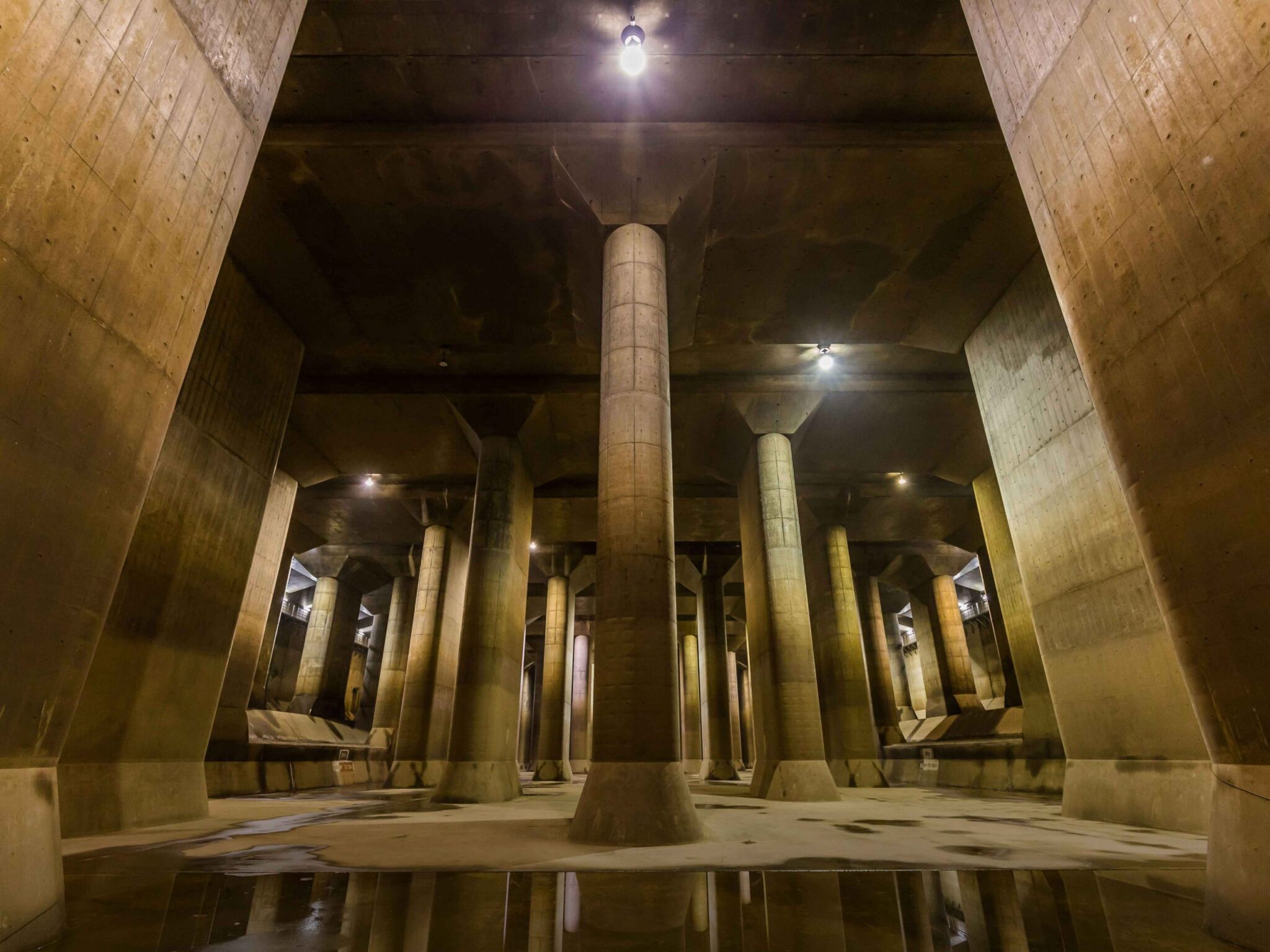
Imagine a cathedral-sized underground space, filled with towering pillars, designed to protect millions from devastating floods. That’s exactly what Japan’s Metropolitan Area Outer Underground Discharge Channel (MAOUDC) is. Popularly know as G-Cans, it is located in Saitama Prefecture, just north of Tokyo, this engineering marvel is the world’s largest underground flood water diversion facility.
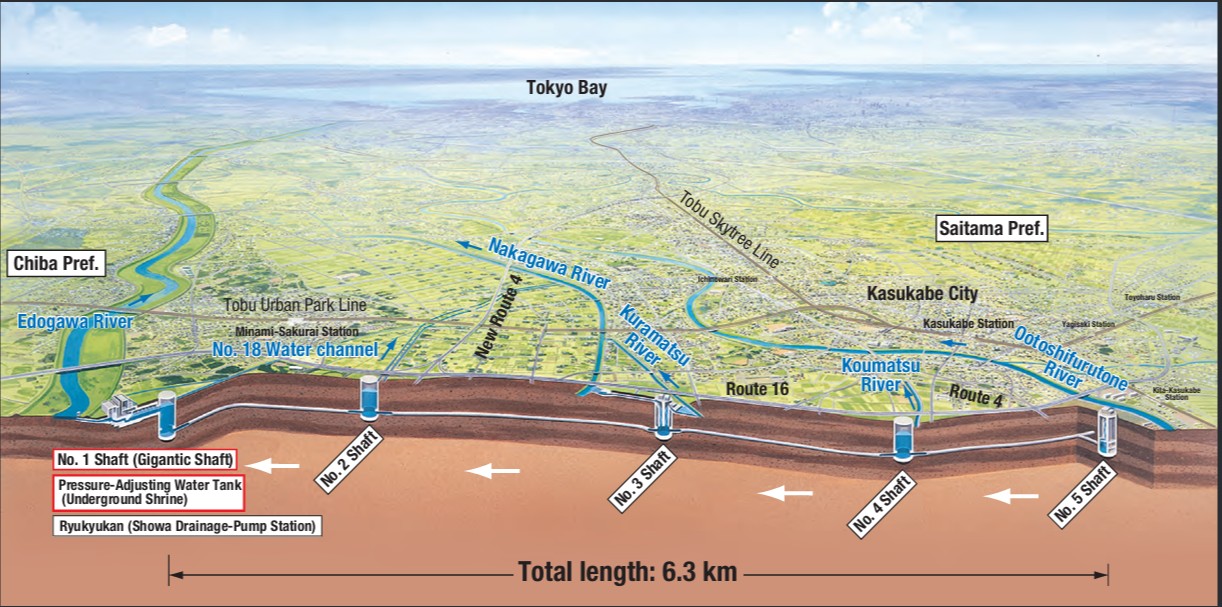
Completed in 2006, the MAOUDC was built to address the frequent flooding caused by typhoons and heavy rainfall in the Greater Tokyo Area. The system spans 6.3 kilometers and includes five massive silos, each large enough to hold a space shuttle, connected by a network of tunnels. At its heart is the “Underground Temple,” a colossal water tank supported by 59 pillars, each weighing 500 tons.

How Does It Work?
The MAOUDC operates like a giant underground sponge, soaking up excess water during heavy rains and releasing it safely into nearby rivers. Here’s how it works step-by-step:
- Water Collection: During heavy rainfall, water flows into the system through five intake silos. The collection occures at these different points: Ootoshifurutone River, Koumatsu River, Kuramatsu River, Nakagawa River and No. 18 Water channel.
- Tunnel Transport: The water is then channeled through a 10-meter-wide tunnel to the main reservoir.
- Storage: The “Underground Temple” temporarily stores the water.
- Discharge: Powerful pumps, capable of moving 200 tons of water per second, release the water into the Edo River.
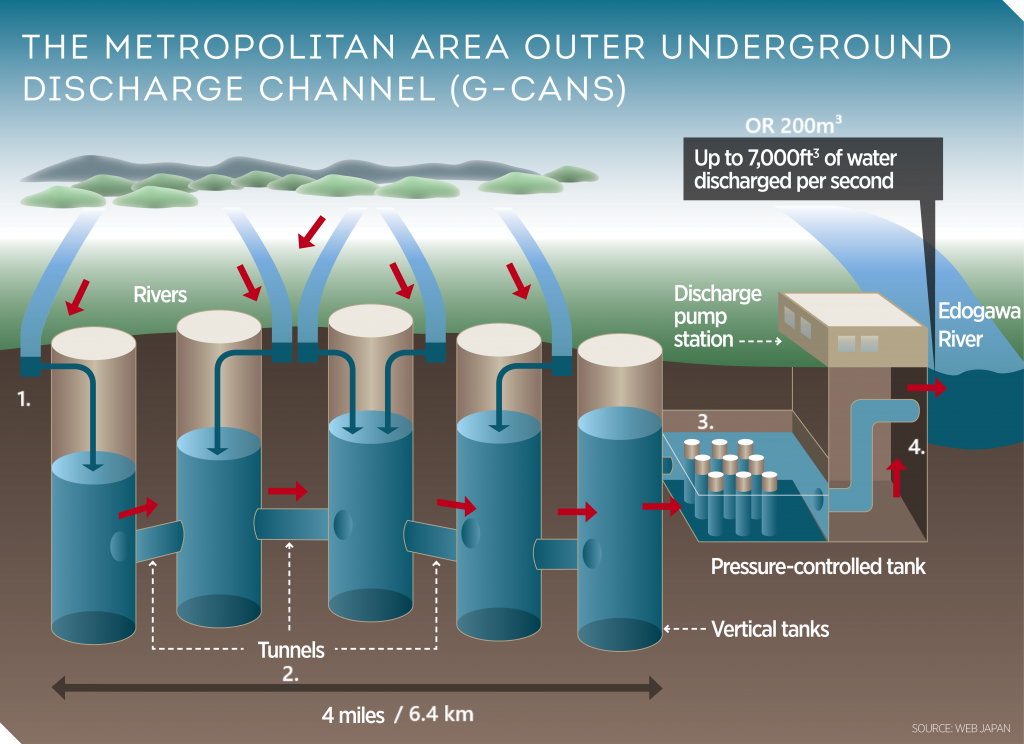
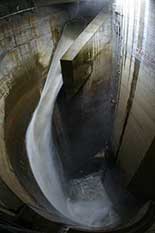
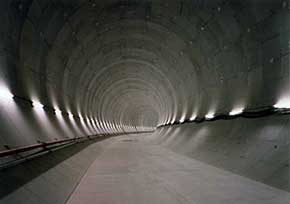
stretches 6.3 km in total
– web-japan.org
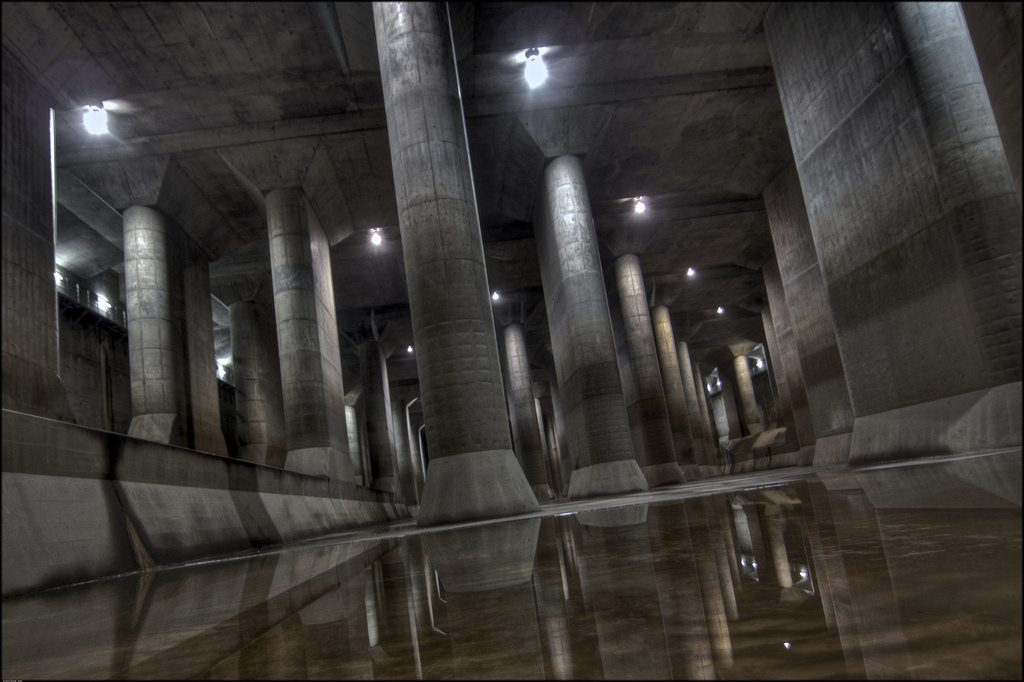
– web-japan.org
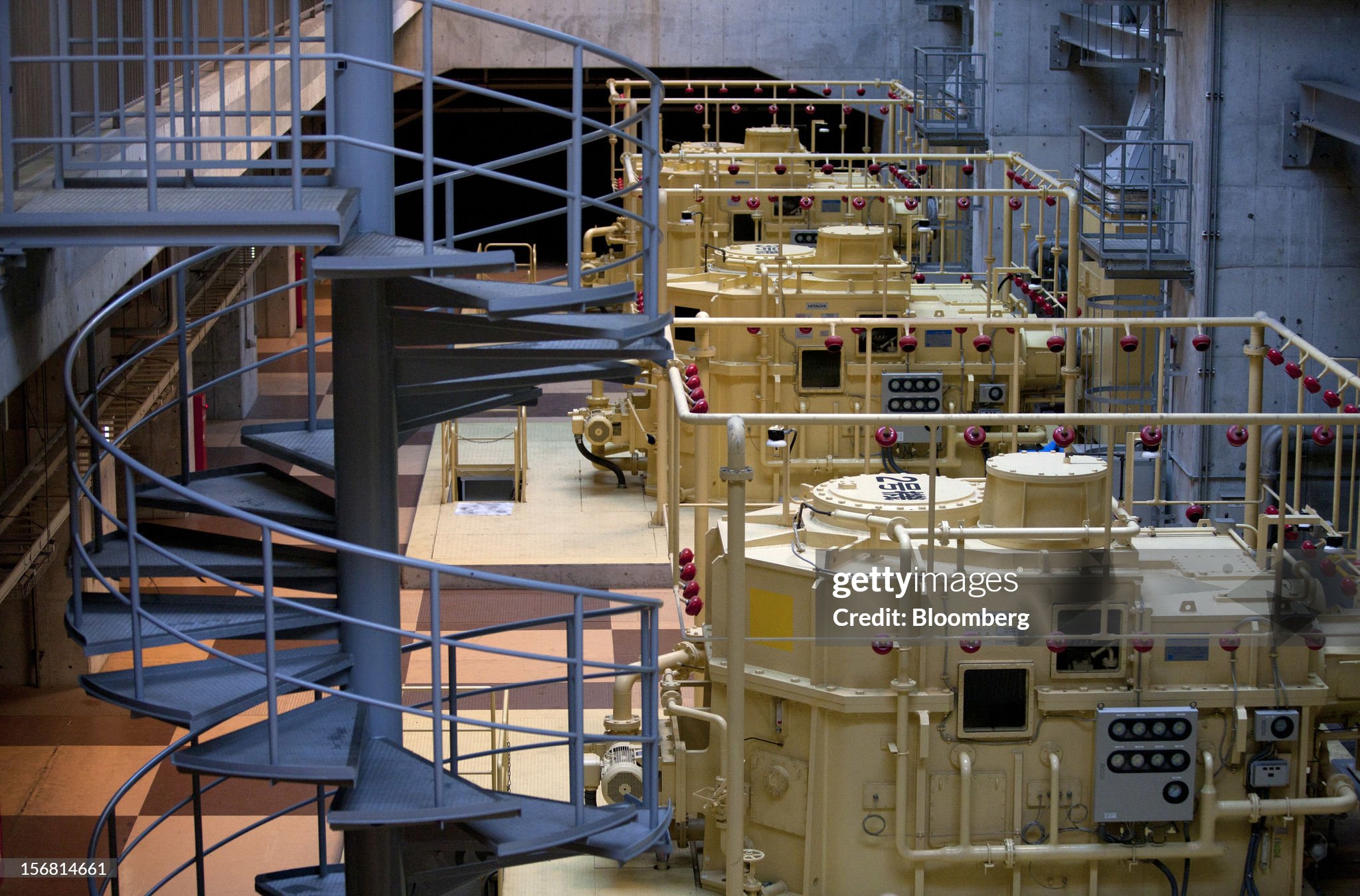
– globalcitizen.org
This process prevents urban flooding by diverting water away from densely populated areas.
The Impact of Japan’s Flood Control System: By the Numbers
Since its completion, the MAOUDC has significantly reduced flood damage in Japan’s Tokyo. Here’s a quick look at its impact:
| Metric | Before MAOUDC | After MAOUDC |
|---|---|---|
| Flood Damage Reduction | 0% | 70% |
| Water Discharge Capacity | N/A | 200 tons/sec |
| Area Protected | N/A | 1,500 km² |
The system has saved billions of dollars in potential flood damage and protected millions of residents.
Why Other Countries Need This System
Climate change is making extreme weather events more frequent and severe. Urban areas, with their concrete landscapes and poor drainage, are particularly vulnerable. The MAOUDC offers a blueprint for flood management that can be adapted to other flood-prone regions just like Japan’s regions.
- The Netherlands: Already a leader in water management, the Netherlands could integrate similar systems to protect low-lying cities like Rotterdam.
- Indonesia: Jakarta, which faces severe flooding annually, could benefit from a scaled-down version of the MAOUDC.
- United States: Cities like Houston, which experienced catastrophic flooding during Hurricane Harvey, could use this technology to mitigate future disasters.
Beyond Flood Control System: Environmental and Economic Benefits of MAOUDC
The MAOUDC isn’t just about preventing floods. It also offers:
- Economic Savings: By reducing flood damage, the system saves billions in recovery costs.
- Urban Resilience: It ensures that cities can continue functioning during extreme weather events.
- Environmental Protection: By managing water flow, it reduces soil erosion and protects ecosystems.
FAQs
1. How much did the MAOUDC cost to build?
The project cost approximately $2 billion, but it has already saved far more in prevented flood damage.
2. Can smaller cities afford a system like this?
While expensive, smaller-scale versions can be designed to fit local budgets and needs.
3. How long did it take to build?
Construction took 13 years, from 1993 to 2006.
4. Is the MAOUDC open to the public?
Yes, parts of the facility are open for tours, offering a fascinating glimpse into its engineering.
5. What’s next for flood management technology?
Innovations like AI-powered flood prediction systems and green infrastructure are being integrated with traditional methods for even greater resilience.
Final Thoughts
Japan’s Metropolitan Area Outer Underground Discharge Channel is more than just a flood control system—it’s a testament to human ingenuity in the face of nature’s challenges. As climate change continues to threaten urban areas worldwide, the MAOUDC offers a powerful solution that other countries can adapt to protect their cities and citizens.
By investing in such infrastructure, we’re not just building flood defenses; we’re building a safer, more resilient future. For more details on this innovative project you can download the brochure here.

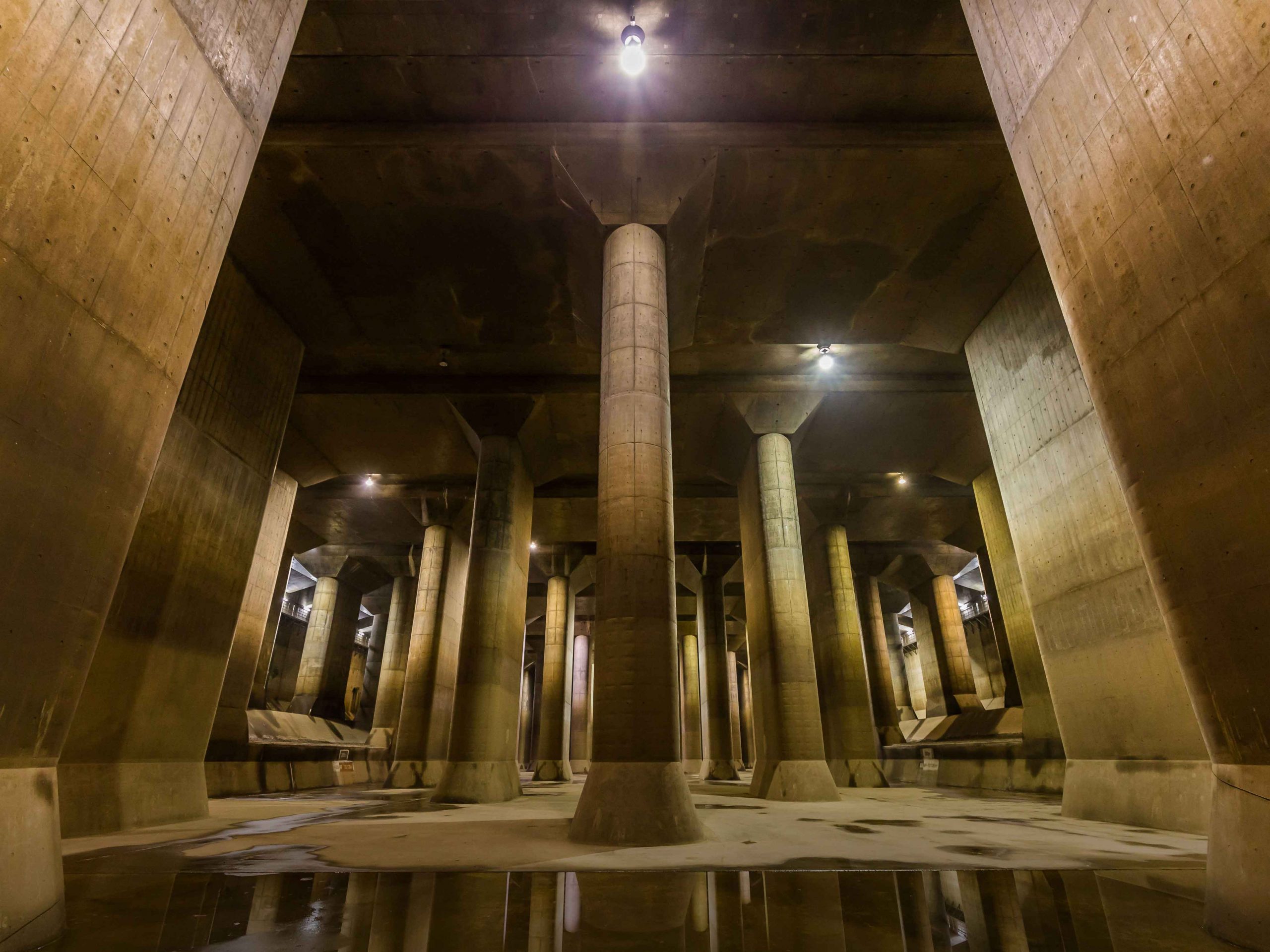
Leave a Reply